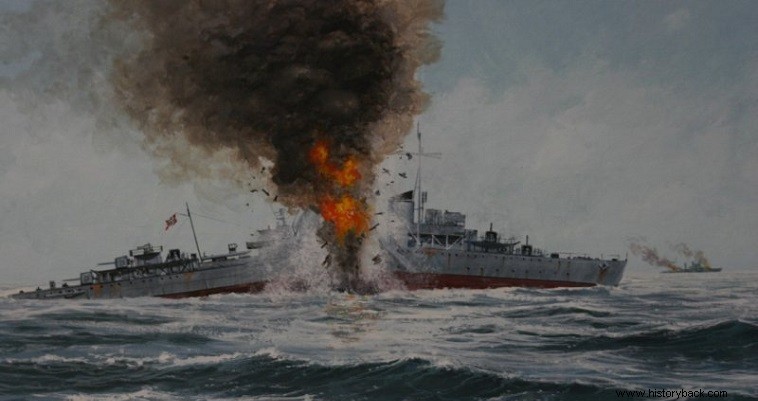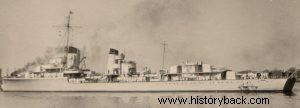
In February 1940 the German navy decided to attack British fishing vessels in the North Sea in the area of Dodger Bank. The mission codenamed "Operation Wikinger" (Viking) was assigned to the 1st Destroyer Flotilla.
The flotilla consisted of the destroyers Z1 Leberecht Maass, Z3 Max Schultz, Z4 Richard Beitzen, Z13 Erich Koellner, Z6 Theodor Riedel and Z16 Friedrich Eckoldt and was commanded by Vice Captain Fritz Berger. The flotilla would also be accompanied by Luftwaffe aircraft.
While this was happening the X Air Corps of the Luftwaffe had planned an offensive patrol of two squadrons of Heinkel He 111 bombers in the wider area for the purpose of attacking British vessels. Despite his requests, the German navy did not have its own aviation branch, by order of Hitler, who rejected any relevant proposal. So he had to rely on the cooperation of the Luftwaffe if and when it existed.
Ambitious business
The German destroyers set sail in the late afternoon of February 22, 1940. The boats traversed the 9 km wide “Weg I” corridor between the minefields covering the German coast and sailed at a speed of 25 knots in a production line.
The night was cold but "clear". The temperature was around 3 degrees Celsius but the visibility was excellent. The time was 19.13 when the watchers at Friedrich Eckoldt picked up the sound of an aircraft. They soon saw, in the moonlight, a twin-engine aircraft, probably a bomber, flying over the destroyers.
The aircraft made a second pass without incident. Eight minutes later, however, he returned. Berger ordered his boats to hold their engines, cutting speed, thinking it was a British reconnaissance.
The last two boats of the line,Richard Beitzen and Erich Koellner opened fire on the aircraft and it responded with its machine gun. Then Max Schultz reported that the aircraft was German. But the report was not believed. The aircraft disappeared into the night sky. At 19.43 the Max Schultz spotted the aircraft again and informed the other vessels.
About two hours earlier, at 17.45 He 111 bombers of the 4th IV/KG26 (4th Squadron of the 26th Fighter Wing) had taken off with the intention of hitting British ships in the area. One of the bombers, the one with the code 1H-IM was flown by Captain Jager. The aircraft shortly after 19.00 spotted a vessel in the sea.
Not knowing what it was about he made two passes and then came under fire and temporarily moved away. It recovered by flying behind the unknown on a ship at about 1,500m. It then attacked by releasing three bombs on its first pass. One of them hit the Leberecht Maass.
The Friedrich Eckoldt rushed to help the burning ship. However, the aircraft made a second pass and hit the Leberecht Maass with two more bombs, cutting it in two. The aircraft left and the other destroyers approached the sinking vessel to pick up survivors. This had to be done quickly because of the freezing water.
Panic kills
Suddenly at 20.04 a second loud explosion was heard and the Max Schultz was thrown into the air and soon sank. The boat probably hit a mine. Panic ensued. The Germans began to see aircraft, bombs, torpedoes and submarines everywhere. Theodor Riedel launched depth charges, but due to a misadjustment its rudder was damaged! Soon Berger also panicked and ordered the four ships he still had on the surface to move away, abandoning the wrecks.
The reckoning was tragic. There were no survivors from the Max Schultz and only 60 men were rescued from the crew of the Leberecht Maass. A total of 578 Germans were lost in the frozen North Sea. Interrogations followed. The official German conclusion stated that both destroyers were sunk by German bombers. However, no one was held responsible for the incident and the sinking of the boats was attributed to enemy action. After the war it was revealed that at least one German destroyer was sunk by a British mine.

The destroyer Max Schultz.
